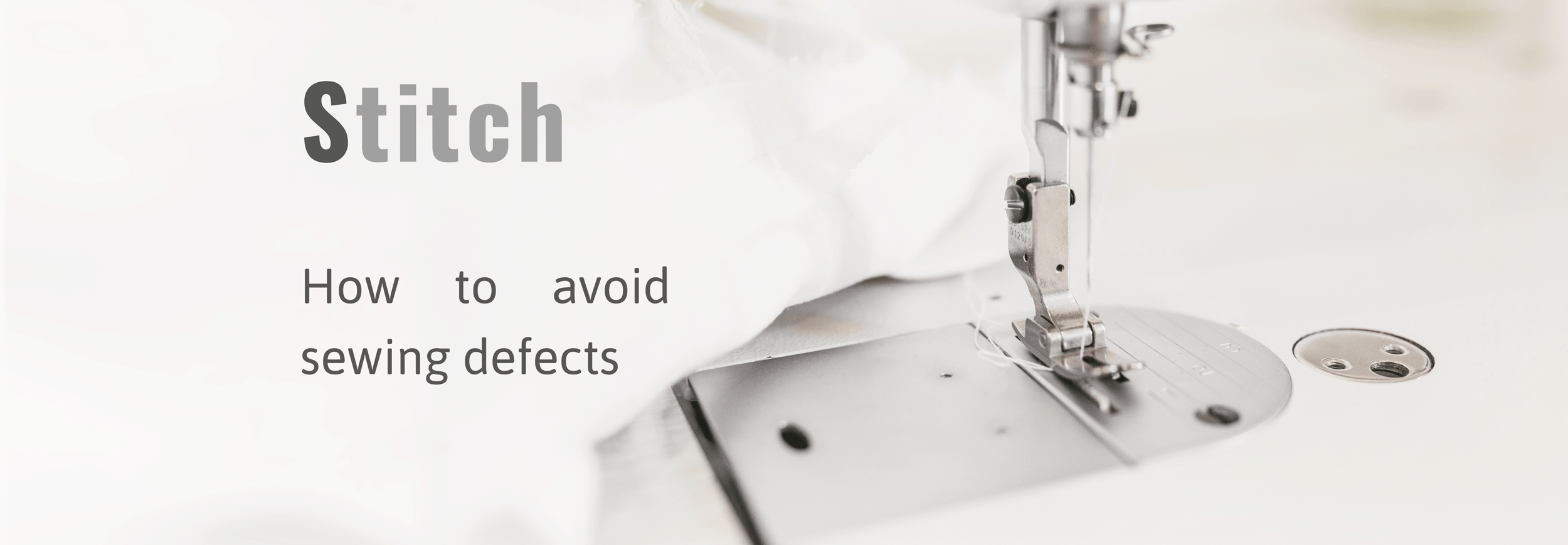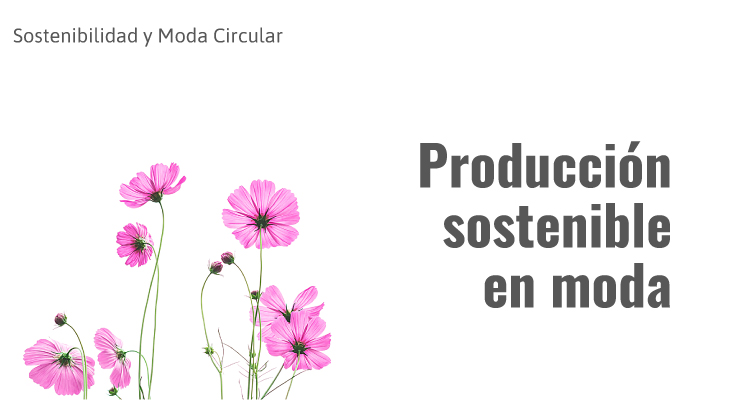
Stitch, how to avoid sewing defects
One of the most basic aspects to take into account in clothing is how to avoid stitch defects in the seam. We have already spoken on previous occasions about what is considered stitch and how it is formed.
Therefore, we can consider that stitch defects occur due to the following factors:
- The characteristics of the fabric we are sewing.
- Type of thread we use.
- Characteristics of the needle.
- State of preservation of the sewing machine.
- Stitch density used.
The combination of these various factors can cause different types of stitch defects. Let us see what rather defects we talking about.
 Seam Pucker or Puckering
Seam Pucker or Puckering
The Puckering seams can occur both at the time of sewing and after washing. It consists in the fabric puckering between stitching. It happens more in woven fabrics than knit, especially in thick woven fabrics.
The Seam Pucker can be due:
- A slip fabric.
- Friction due an excessive tension of the thread.
- Retention produced by the sewing machine.
Due fabric slipage

The fabric slips under the stitching when the loop has formed. This is because the needle has difficulty penetrating the fabric due it has very tight structure. This happens especially when the stitch has done in the same direction as the weft fabric or the bias.
To know if the stitching retention is due to the type of fabric. After sewing, cut the thread between stitching and stitching. If the fabric is still gathered, the stitching retention is due to the type of fabric.
Solutions to prevent fabric slippage
- Use a thickness thread as thin as possible while maintaining the strength of the stitch.
- If it is necessary, change the type of thread for one of greater tenacity.
- Use a needle size as smaller as possible for the sewing characteristics you are making.
- Try using a sharp, long-pointed needle so that it offers the least resistance to tissue penetration.
- Use a needle plate with the smallest possible hole.
- Reduce the number of stitches per centimetre.
- Therefore, there is less tissue measurement displaced between stitch and stitch.
Due an excessive thread tension
 If an excessive tension is applied to the thread. When the stitch has formed, the thread tries to recover or return to its original length. What ends up producing a puckering of the fabric as soon as it comes out of the pressure exerted by the presser foot. Or as soon as the fabric loses the tension provided by the sizing after washing.
If an excessive tension is applied to the thread. When the stitch has formed, the thread tries to recover or return to its original length. What ends up producing a puckering of the fabric as soon as it comes out of the pressure exerted by the presser foot. Or as soon as the fabric loses the tension provided by the sizing after washing.
To identify if the stitching retention is due to excessive tension in the thread, cut the stitching. And see if the fabric smoothest, stops being shirred.
How to solve the excessive tension of the thread
- Take down the thread tension. For do it start by lowering the tension of the bobbin, or in other case the anchor, maintaining the tension of the thread. If it is not enough, lower the tension of the thread maintaining a balanced stitch and a firm stitching.
- Use a type of thread with less elongation capacity to minimize stitch stretch.
- Use a thread with a good lubrication characteristic for favour the stitch elongation.
- Select a thinner thread to facilitate the penetration into the fabric and lower the machine tension.
- If the seam quality allow it, use a thicker needle. Or use a round tip to make a larger hole when entering the fabric. So it will lower the tension.
- Keep the machine clean and free of waste to avoid friction of the thread.
Retention produced by the sewing machine

The seams are retain because of the machine. This occur when the fabric is sew with an unbalanced feed drop tension. Having an unbalanced top and bottom tension produces a disparate displacement between the layers of tissue. It usually happens because the press foot exerts a different pressure to exert by the feed dog. Or because the operator retains the fabric.
This problem can be identify by observing if the thread cut the stitching there is a displacement of the fabric.
Solve the retention produced by the sewing machine.
- Lower the pressure of the presser foot as much as possible.
- Adjust the feed drop according to the thickness and characteristics of the fabric being sewn.
- Use a type of feed drop adjusted to the type of fabric.
- For thin fabrics, use a feed drop with a density of 20-24 teeth per inch.
- For thick fabrics, lower the density to 8-12 teeth.
- Adjust the throat plate to the size needle. Use a small hole plate with thin needles. As a general rule, the hole of the throat plate should be approximately twice as large as the needle size.
- For certain fabrics facilitate the sliding of the same using a Teflon foot.
- Improve the feed system using a puller feed or a compound feed machine and / or diferential feed.
- Rectify the manipulation of the fabric when sewing.
- If the layers of fabric that are sewing do not have the same stretch capacity. Place the layer that stretches more in bottom side, at the feed drop side.
Seam grinning or Seam slippage
The slippage of the stitch is cause by a mismatch at the point where the loop stitch is make. When the loop is form, it slides towards the upper or lower side of the seam, so that the edges of the seam are separate when pulling and when the release is continued open.
The causes that produce this problem can be:
- Due to an incorrect stitch tension for the stitching that is done.
- The selected stitch length is too long.
Due to excess tension in the bobbin case
 If the lower tension is too high the loop stitch moves towards the lower layer of the fabric.
If the lower tension is too high the loop stitch moves towards the lower layer of the fabric.
Due to excess tension in the needle
 If the upper tension is too high the loop stitch moves towards the upper layer of the fabric.
If the upper tension is too high the loop stitch moves towards the upper layer of the fabric.
For solve the stitch slip
 Adjust the tension of the bobbin or thread until a regular stitch is obtained. In a well-regulated stitch the knot should be formed in the centre of the thickness formed by the two layers of fabric.
Adjust the tension of the bobbin or thread until a regular stitch is obtained. In a well-regulated stitch the knot should be formed in the centre of the thickness formed by the two layers of fabric.
Thread breakage
Either the thread break occurs during the sewing process in which the needle thread or the bobbin thread break when the stitch is formed.
The causes of a thread breakage can be many and range from:
- Inadequate thread quality.
- Inadequate ratio between thread thickness and needle size.
- The thickness of the thread is too thin in relation to the size of the needle used.
- Tread tension too high.
- Stitch density too low.
- Needle incorrectly placed.
- For a mismatch or poor lubrication in the mechanism of the bobbin.
- Due to overheating of the needle. Improper machine. Improper handling of the operator.
For solve the thread breakage of the stitch
Check if any of the factors that can cause it and rectify it.
Loose stitch or Seam bray
The loss stitch is caused by a loss of thread in the formation of the stitch causing the loss of the formation of the loop.
The stitch loss can occur due:
- A fault in the adjustment of the bobbin case or is not properly threaded.
- Low quality of thread used.
- Wear of the machine pieces.
- Thread tension is too low.
- Too much sewing speed.
- The inappropriate needle type used or the needle is wear.
- Needle thickness too thick.
- In elastic fabric, because a ball point needle is not used.
- Obstruction of the needle eye due a melting thread or material.
For solve the seam bray
Check if any of the factors that can cause it and rectify it.
Skipped Stitch or Slipped stich
It is described as a Skipped Stitch when in a seam the length of the stitch bar irregularly. Stitches are found with the correct length along with longer ones, normally twice the desired length.
Skipped Stitch can occur due:
- A failure in the loop formation that makes up the stitch due to a bad adjustment or maintenance of the sewing machine.
- Due a wrong relationship between thickness of needle and thread.
- A defective, poor quality or damaged needle.
- Inappropriate thread size.
- Inadequate twisting of the thread.
- Stress lag in the needle thread.
- Stitch length too long.
- Poor pressure of the press foot or feed dog too long.
- The fabric is too thick and the speed of the thread has to be reduced. machine and make the stitching longer.
For solve the Skipped Stitch
Check if any of the factors that can cause it and rectify it.
Broken material
When the stitch is set up, a perforation appear in the fabric along the seam due to the penetration of the needle.
Perforation of the fabric can happen due:
- Needle type is unsuitable because the head type or the thickness of the needle.
- The needle is not suitable.
- To a fabric in poor condition because it is badly finished or has burned with the iron.
To solve the broken material when forming the stitch
Check if any of the factors that can cause it and rectify it.
Uneven stitch
The stitch does not form in a straight and regular line. Some stitches remain displaced on the seam line.
The irregular stitch can be due:
- Poor thread quality.
To solve the uneven stitch
Check if any of the factors that may cause it and rectify it.
Clogged stitch
It occurs due to some resistance to the sliding of the fabric layers when the seam is carry out causing the irregular stitch.
The Clogged stitch may be due:
- A defect of synchronization in the mechanisms of feed drop.
- To an inadequate presser foot for the thickness of the tissue.
- The presser foot is inadequate for the material type with it is working.
- The feed drop type is unsuitable for the fabric employed.
- Either by the type and size of the feed drop teeth, or because it requires a supplementary feed drop such as puller feed, impeller needle.
- Fabric layers do not have the same stretching properties. In that case, place the most elastic fabric in the lower side, touching the feed drop.
- Inappropriate handling of the operator by dragging or retaining one of the seam layers.
To solve the Clogged stitch
Check if any of the factors that can cause it and rectify it.
As we have seen in the formation of the stitch is involved several elements that directly affect the correct result or not of it. Knowing and mastering the use of these elements directly affects the stitch quality that will be obtained.
 Olga Fuenmayor
Olga Fuenmayor
Editor of Seampedia
Fashion Technical Management / Consulting
Style development / Quality control / Production control.
This article is publish simultaneously in:
|
|
SEAMPEDIA |
«sharing knowledge makes us happy”











